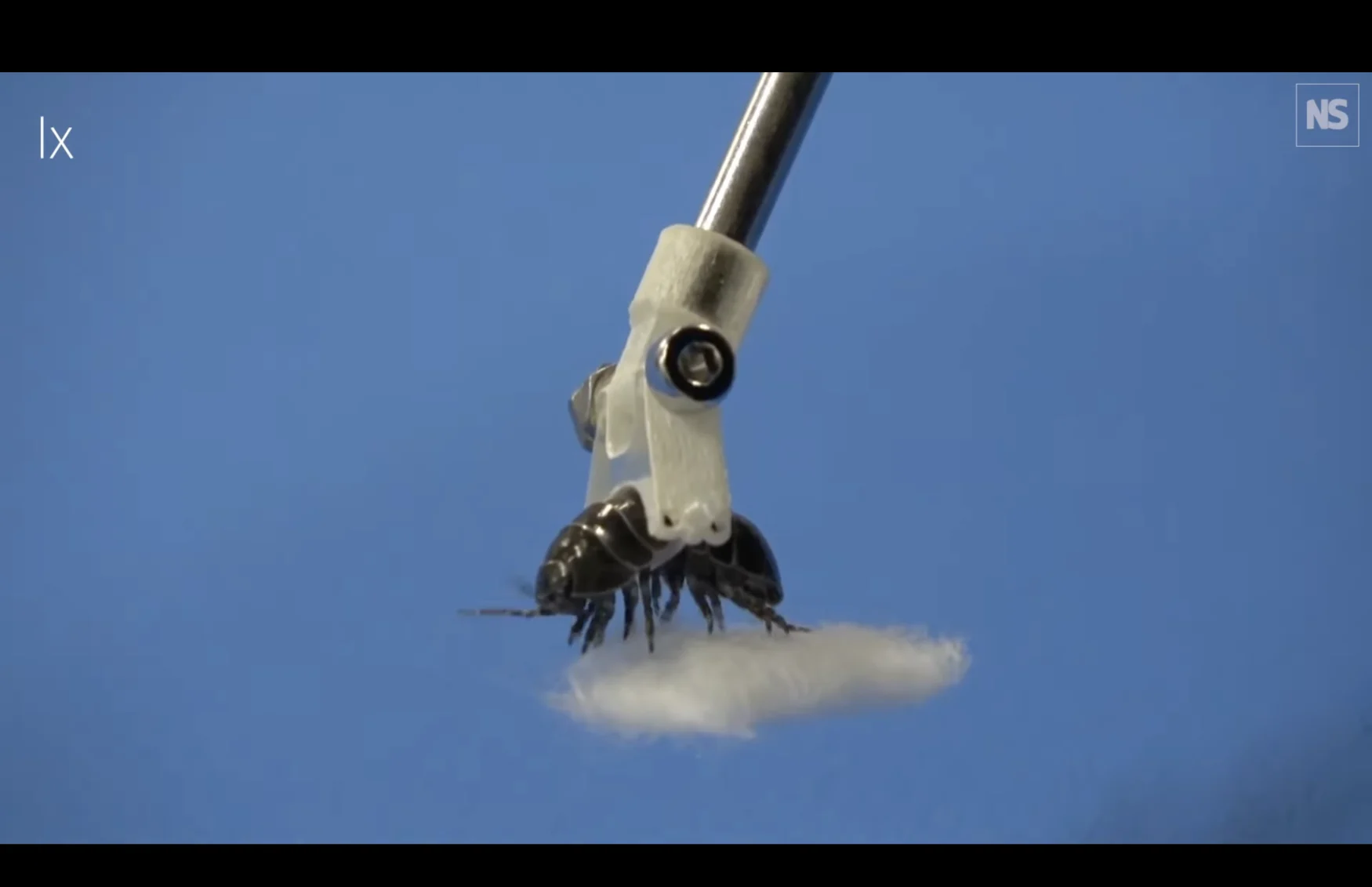The human hand is a marvel of evolutionary development, offering 27 degrees of freedom and unrivaled touch sensitivity. But it’s the same aspects that make our hands so, well, handy, that also make them an absolute nightmare to recreate robotically. That’s why one team of researchers has abandoned human-derived gripper design in favor of woodlice.
Look, at least they’re not the desiccated and re-inflated tarantula corpses that a team of Rice University researchers created in 2022. Those manipulators were a novel proof of concept in that they exploited the natural mechanisms spiders use for locomotion — specifically that their limbs move through a combination of fluid pressure and flexor muscles, rather than the antagonistic pairs that mammals have — though the system was really only good for as long as the corpses held together.

Tohoku University via NewScientist
The new system designed by Dr. Josephine Galipon and her team at Japan’s Tohoku University builds on the earlier work with “necrobotic” spiders but relies on bugs that are still alive. “To our knowledge, there is no prior example of whole living organisms being used as end effectors for robotic arms, which we propose here,” Galipon points out in Biological Organisms as End Effectors. The team relies on both captured woodlice (aka rolly-pollies) and captive chitons (small marine mollusks) to temporarily serve as a robot’s hands.
They first 3D printed tiny seats for the animals to sit on at the end of the robot’s manipulator arm, then set the woodlice and chitons to task, picking up tufts of cotton and submerged cork, respectively. The results were about as promising as one could really hope for: the woodlice futzed around with the cotton for about two minutes before losing interest, while the chiton’s grabbed hold of their prizes and had to be actively separated from them. Still, the fact that the chiton got a grip at all was promising, given existing difficulties in using suction cups and similar mechanical methods underwater. Granted, much more work needs to be completed before these early concepts can even potentially be adapted into functional and efficient robotics systems.
The team’s work also raises ethical questions about the test animals’ welfare, such as whether they are being forced to perform against their will and how such motivations are delivered. “Especially for sentient animals, we would like to establish a kind of mutual interaction with a cooperative relationship,” Galipon told New Scintist. “It’s a little bit different from domestication, but just a cooperation, where the animal can then go about its day.” To be fair, it’s certainly less invasive than your average cyborg cockroach research.
All products recommended by Engadget are selected by our editorial team, independent of our parent company. Some of our stories include affiliate links. If you buy something through one of these links, we may earn an affiliate commission. All prices are correct at the time of publishing.
Trending Products

Cooler Master MasterBox Q300L Micro-ATX Tower with Magnetic Design Dust Filter, Transparent Acrylic Side Panel…

ASUS TUF Gaming GT301 ZAKU II Edition ATX mid-Tower Compact case with Tempered Glass Side Panel, Honeycomb Front Panel…

ASUS TUF Gaming GT501 Mid-Tower Computer Case for up to EATX Motherboards with USB 3.0 Front Panel Cases GT501/GRY/WITH…

be quiet! Pure Base 500DX Black, Mid Tower ATX case, ARGB, 3 pre-installed Pure Wings 2, BGW37, tempered glass window

ASUS ROG Strix Helios GX601 White Edition RGB Mid-Tower Computer Case for ATX/EATX Motherboards with tempered glass…










